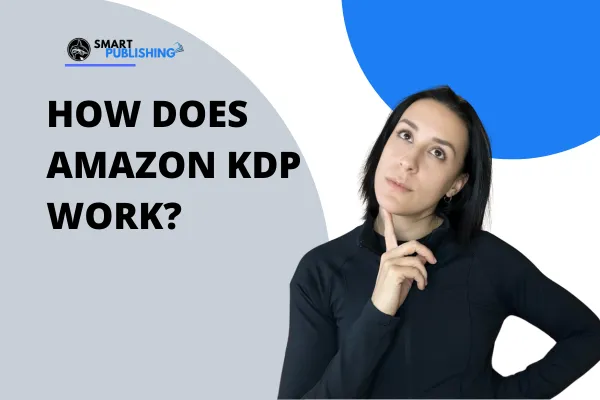
How Does Amazon KDP Really Work?
How Does Amazon KDP Really Work?
(And Why It’s Still My Go-To for Publishing)
By Renée Lautermilch, Chief Editor at Smart Publishing
Let’s talk about something I’m genuinely shocked I haven’t covered sooner: Amazon KDP.
Every week, I talk to aspiring authors who are either totally confused by it or holding on to some outdated (or just flat-out wrong) ideas about how it works. So, I’m dedicating this post to giving you a clear, no-BS overview of how Amazon KDP actually works—and why it's such a powerful tool for authors, especially those using their book strategically to grow their brand, business, or credibility.
What Even Is Amazon KDP?
KDP stands for Kindle Direct Publishing, and it’s Amazon’s self-publishing platform. The magic of KDP is that it uses print-on-demand technology, meaning:
There are no setup fees.
You don’t need to order hundreds (or thousands) of copies upfront.
Your book gets printed only when someone orders it.
You don’t have to become your own warehouse manager.
Gone are the days of having boxes of books stacked in your garage or spending thousands just to get started. That old-school route still exists (and still costs a fortune), but with KDP, publishing a book is more accessible—and scalable—than ever.
The Formats: More Than Just Kindle
There’s a big misconception that KDP = Kindle only. Not true.
With Amazon KDP, you can publish in three formats:
Kindle (ebook)
Paperback
Hardcover (case laminate style)
I personally love their case laminate hardcover option. It looks sleek, there’s no annoying dust jacket to tear or lose, and it just feels durable and professional—especially for authors with toddlers. 😉
You also get options for:
Matte or glossy covers
Cream or white interior pages
Black & white or color ink (especially great for children’s books or workbooks)
Royalties: What Do You Actually Make?
Let’s be real—the riches ain’t in the royalties unless you're in that elusive 1–5% of top-selling authors. But here's how it works:
Kindle: You earn up to 70% of your book’s price (minus a small delivery fee, usually around 8¢).
Paperback and Hardcover: You get 60% of the book’s list price after printing costs are deducted.
So if you price your paperback at $9.99 and the printing cost is $2.50:
$9.99 - $2.50 = $7.49
60% of $7.49 = $4.49 in royalties per copy
Bestseller Strategy: Why Kindle Releases Matter
If you’ve ever heard me talk about bestseller rankings, you know this:
You need a Kindle version to hit Amazon Bestseller status.
Why? Because bestseller rankings are based on orders, not sales. Print books take time to process, print, and ship. That can delay when your order is counted—sometimes by days. With Kindle, orders are instant. That’s why a one-day Kindle release is the go-to strategy for hitting bestseller.
What About Expanded Distribution?
KDP offers the option to make your book available beyond Amazon—this is called Expanded Distribution. It puts your book in databases that libraries and bookstores can order from. But here’s the thing:
It doesn’t guarantee you’ll be stocked in stores.
It won’t make you rich.
And honestly? It’s often a vanity move.
Yes, it’s fun to say “I’m in Barnes & Noble,” but the vast majority of book sales (80%+ of online book sales!) happen on Amazon. So unless being in a library or bookstore is tied to your actual business goals, don’t pour all your energy there.
Amazon KDP is Global
Another perk? KDP gives you international distribution by default. So when you publish your book in the U.S., it’s also available in markets like the UK, Canada, Japan, Germany, and more—without you lifting a finger.
Final Thoughts: Use KDP Smartly
Amazon KDP is hands down my favorite publishing platform for self-publishing authors who want to:
Build their brand
Launch a business funnel
Share their story with the world
Or just finally get their book out there
It’s free to use, gives you access to a global audience, and makes publishing a book more doable than ever before.
So if you’ve been stuck on the sidelines wondering whether or not you should publish through Amazon KDP—here’s your sign.
Do it. But do it smartly.
Focus on formats that support your strategy. Don’t chase vanity metrics. And remember, the goal is impact—not inventory.
👉 Want help making your book strategy work for you?
📩 Shoot me a DM or follow me on Facebook @Renée Lautermilch
📚 And be sure to subscribe to The Smart Publishing Impact Series podcast for more insights like this.
Because the world needs your voice—and I’m here to help you share it.
